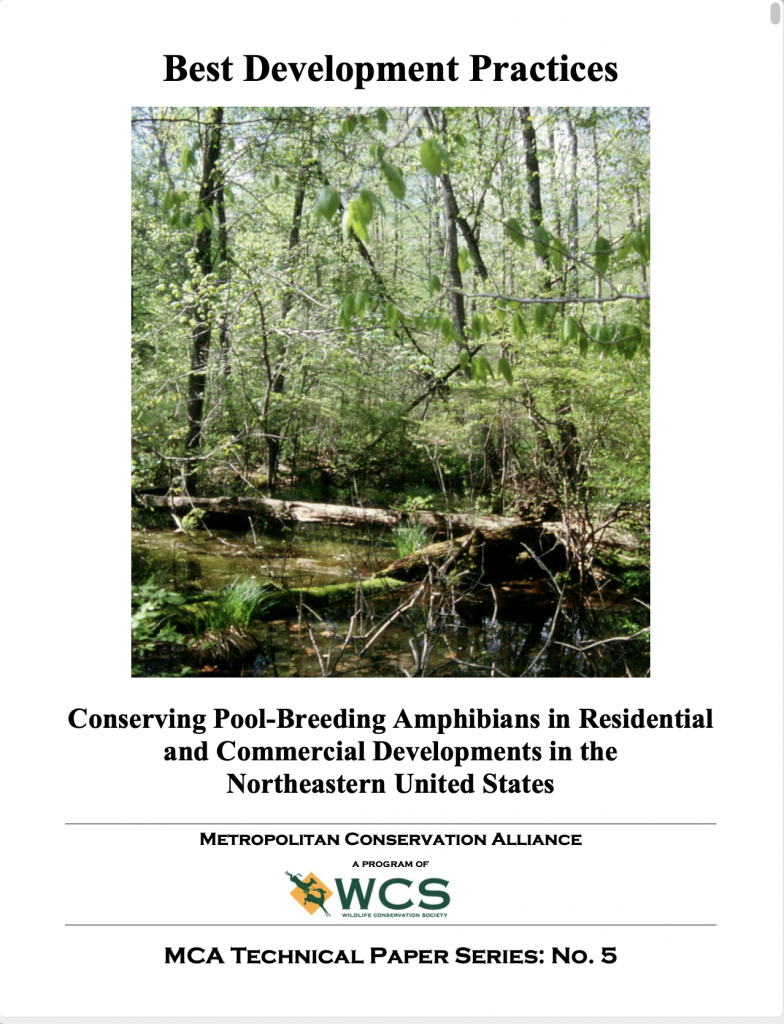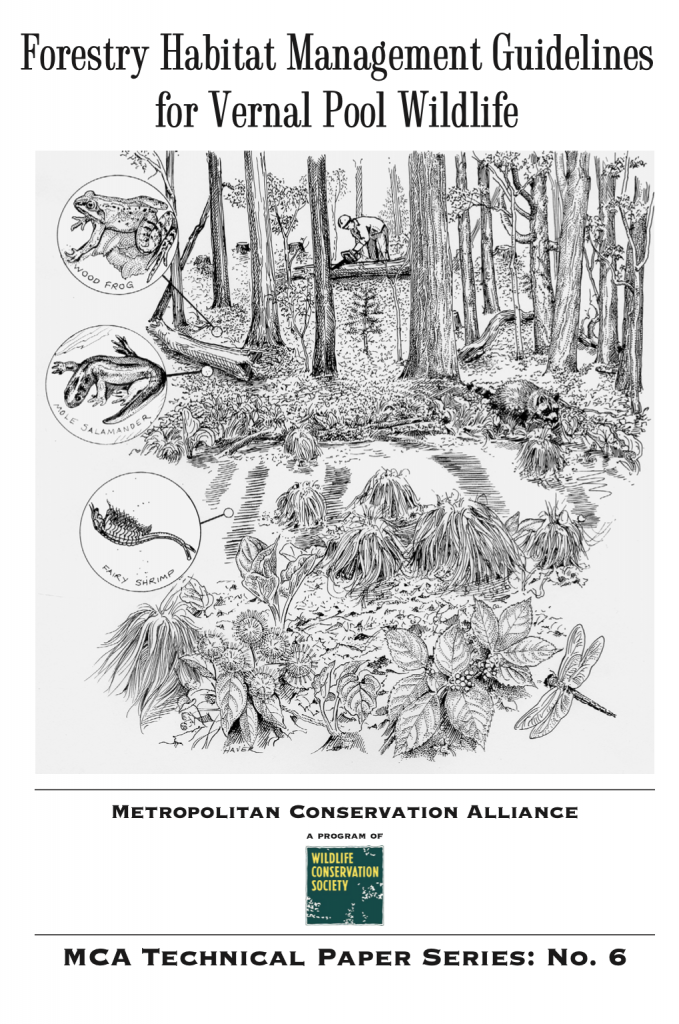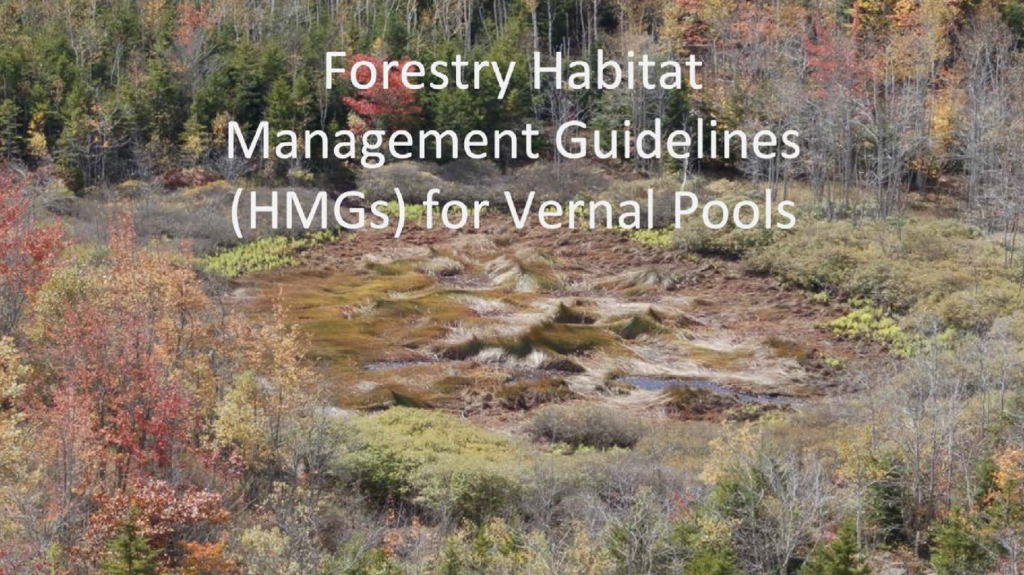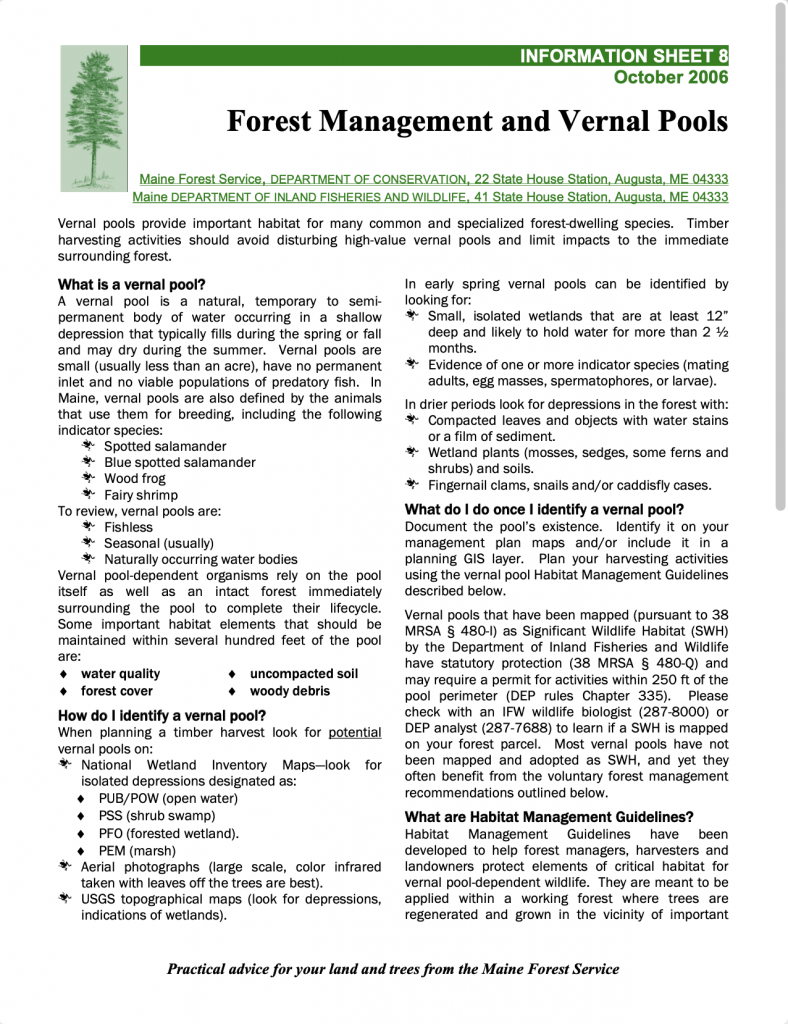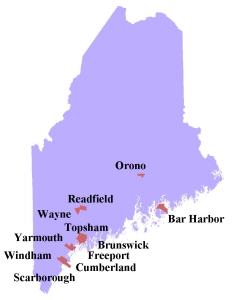
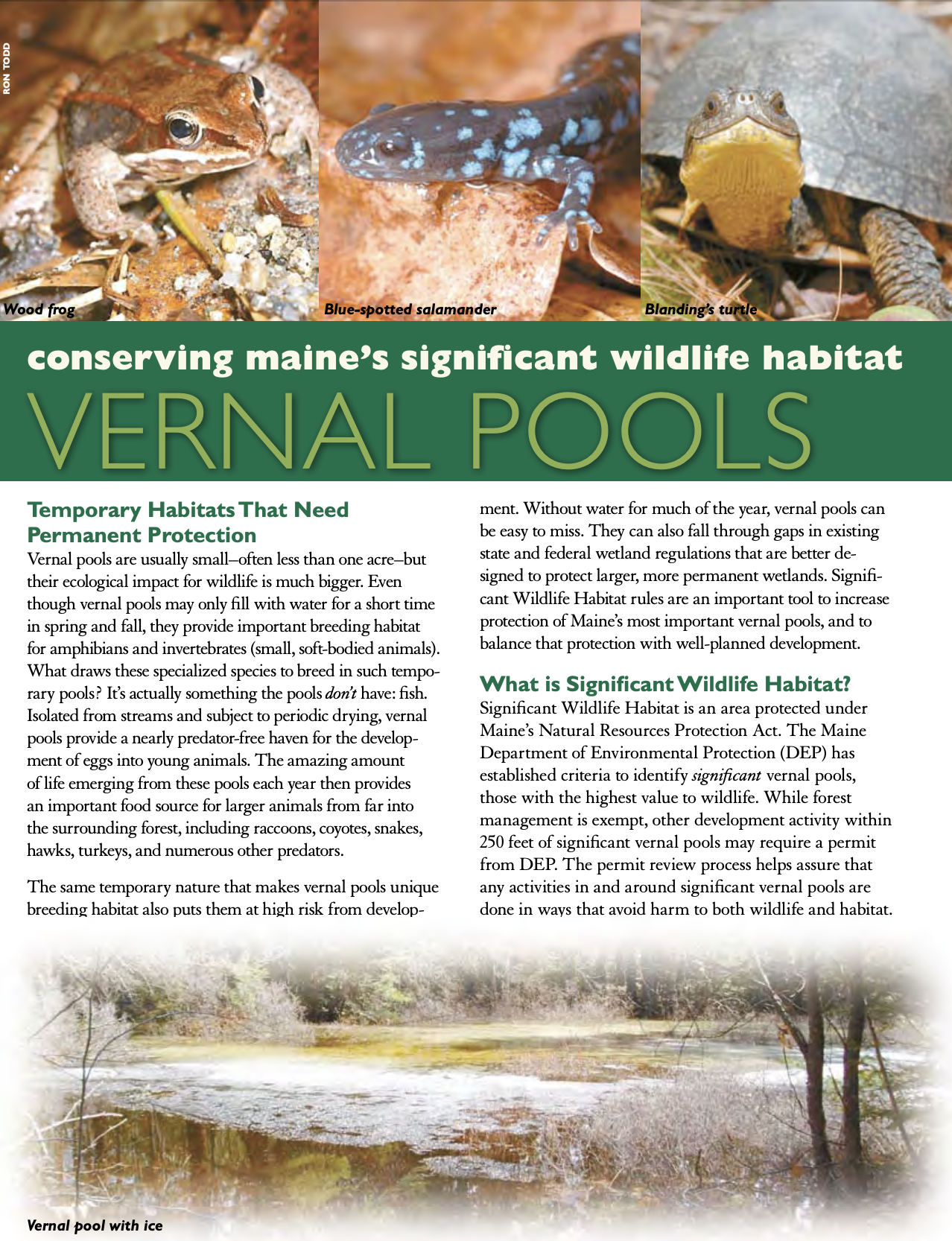
Conserving Maine’s Significant Wildlife Habitat Fact Sheet
An information bulletin produced by Maine Audubon, Maine Department of Environmental Protection, and Maine Department of Inland Fisheries and Wildlife
Best Development Practices
Vernal pools and adjacent upland habitats contribute a vast amount of biodiversity to landscapes of the northeastern United States. However, due to their small size, and a variety of other issues, these habitats are disproportionately impacted by development trends associated with regional urban and economic growth. As a result, vernal pools— and the species that depend on them—are disappearing at a rapid rate. We must come to terms with the complexities that surround the protection of vernal pools. The Best Development Practices (BDPs) in this publication present a new approach to accomplish this goal. This document also outlines steps to identify those vernal pools worthy of protection.
Forestry Habitat Management Guidelines for Vernal Pool Wildlife
Forestry Habitat Management Guidelines for vernal pools (HMGs) were developed to help forest managers, harvesters and landowners protect elements of critical habitat for vernal pool – dependent wildlife. They are meant to be applied within a working forest where trees are regenerated and grown in the vicinity of important vernal pools. It may not be possible to protect all vernal pools during forest management activities. Priority should be placed on protecting relatively high-value pools that show significant breeding activity in most years.
The habitat guidelines, outlined below, are broken into three zones. Full descriptions and justifications can be found in Forestry Habitat Management Guidelines for Vernal Pool Wildlife.
The habitat management zones include the pool itself, the area within 100 ft of the pool perimeter (Protection Zone), and the critical amphibian habitat between 100 ft and 400 ft of the pool perimeter (Life Zone). When planning management activities:
Scout for potential vernal pools using wetland maps, town maps, aerial photographs and topographic maps. Document vernal pools found in the field. Map vernal pools and surrounding habitat management zones. Avoid vernal pools and associated management zones when planning roads and log landings. Avoid clear-cuts and pesticide applications near vernal pools. Limit roads, landings and heavy cuttings between valuable pools separated by less than ¼ mile. Within the pool footprint (delimited by spring high water level): Flag the pool perimeter during harvest layout and prior to cutting (can be done during spring ice breakup when harvesting activities are curtailed). Avoid disturbing the basin and surrounding vegetation. Prevent slash and sediment from entering the pool. Between March and June leave debris that falls in accidentally to avoid disturbing breeding activity and development of young. Within 100’ of the pool perimeter (Protection Zone): Flag the boundaries of the protection zone. Maintain a uniformly distributed stand of trees, at least 20-30 feet tall, with at least 75% canopy cover. Minimize soil disturbance and limit harvest to periods when soil is dry or frozen. Avoid use of heavy machinery. Avoid construction of new roads or landings; use BMP’s to protect water quality on old ones. Avoid disturbing fallen logs. Leave some older or dying trees as sources of future coarse woody debris. Leave tops and limbs from harvested trees. Avoid chemical use. Outside 100’ of pool perimeter but within 400’ (Life Zone): Maintain a uniformly distributed stand of trees, at least 20-30 feet tall, with at least 50% canopy cover. Avoid plantations and large-scale changes in forest cover type. Limit canopy openings to less than 1 acre. Leave older or dying trees (2 per acre or more). Minimize soil compaction by harvesting when soil is frozen or dry. Avoid constructing new roads or landings; apply BMP’s to existing ones. Minimize the use of chemicals, especially during early spring and late summer/early fall, when amphibians are migrating. Summarized from: Calhoun, A.J.K. and P. deMaynadier. 2004. (Forestry habitat management guidelines for vernal pool wildlife).
Forest Management and Vernal Pools
Vernal pools provide important habitat for many common and specialized forest-dwelling species. Timber harvesting activities should avoid disturbing high-value vernal pools and limit impacts to the immediate surrounding forest.
A Community Approach to Mapping Vernal Pool Resources
In 2007, Maine adopted legislation to regulate a subset of vernal pools that meet certain biological and hydrological criteria as Significant Wildlife Habitat. The Maine Vernal Pool Municipal Mapping and Assessment Project (VPMAP) served to educate communities about vernal pool ecology and lead them through the process of using citizen scientists to proactively map and survey vernal pool resources with special attention to identifying pools that meet the biological criteria for Significant Vernal Pools. The goals of the project were to:
1. Avoid loss of time and money for private landowners by way of free vernal pool surveys
2. Enable better-informed planning at a town-wide level
3. Encourage conservation at the local level that will serve to complement the top-down regulatory approach used by state and federal agencies
If your town is interested in following up on how to use the data, or needs assistance with processing the data, please contact us.
Since the program ended, a diverse stakeholder group organized by the University of Maine, has been working to develop an innovative, locally controlled vernal pool regulatory framework. You can read about this next step in the page: The Vernal Pool Special Area Management Plan.
Recommended steps for mapping vernal pools at the local level

